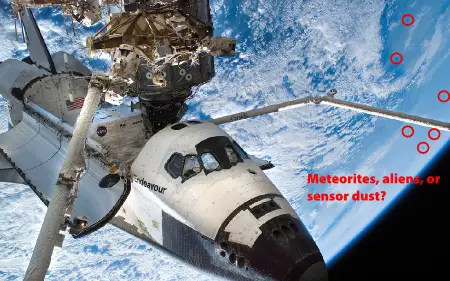If you haven’t seen these photos from a recent Shuttle mission you should definitely check them out. Spectacular. But, me being who I am, I couldn’t help but notice the sensor dust defects in the fifth photo. You can tell it’s dust on the sensor because it shows up again in the same places on the seventh photo which is also shot at a high f-stop (where sensor spots are more likely to appear) (and you can tell it’s a high f-stop because everything in the frame is in sharp focus.).

I should probably get out more.
I can’t wait until it’s feasible for private citizens to go on Earth orbit “safaris.” I’ll definitely make sure my sensor is clean before hand. 😉









DSLR-newbie question: How does a high f-stop indicate that the dust is on the sensor and not the lens?
I found dust on my sensor after only 2 weeks of using my DSLR, even though I only changed lenses in a calm environment (non-windy, not that stress would increase the likelihood of sensor dust!). I first checked the filter, then the outside of the lens – no fix. So I used a puffer to clean the sensor and that was it. I was surprised I had sensor dust so soon, as my camera (Canon XTi) has an automatic feature to shake dust off. Yet there it was! All clean now, but concerned how often this is going to be a problem for me.
Thanks for any tips you might have!
Phil, dust on your sensor will be a constant issue but I’ve never found it to be an especially big deal. I’d wager that most cameras ship with dust on the sensor. You will eventually get sensor dust even if you never change lenses as lenses are not air tight and they move air and dust during zooming and focusing.
Sensor dust is usually only visible at high f-stops and then only in scenes that make it easy to spot. The dust isn’t actually directly on the sensor. It’s sitting on a piece of glass attached just over the sensor. At low (wide) f-stops, light is hitting any given pixel on the sensor from multiple directions so some of it comes in at an angle that goes around the dust. But at high f-stops (f/16, f/22), light is hitting the sensor straight on which causes the dust shadow to fall on some of the pixel sensors.
Dust on the lens itself will never be in focus so unless you’ve got a ton of it on there you’ll never notice (which is one reason you hear advice not to be too worried about keeping your lenses spotless).